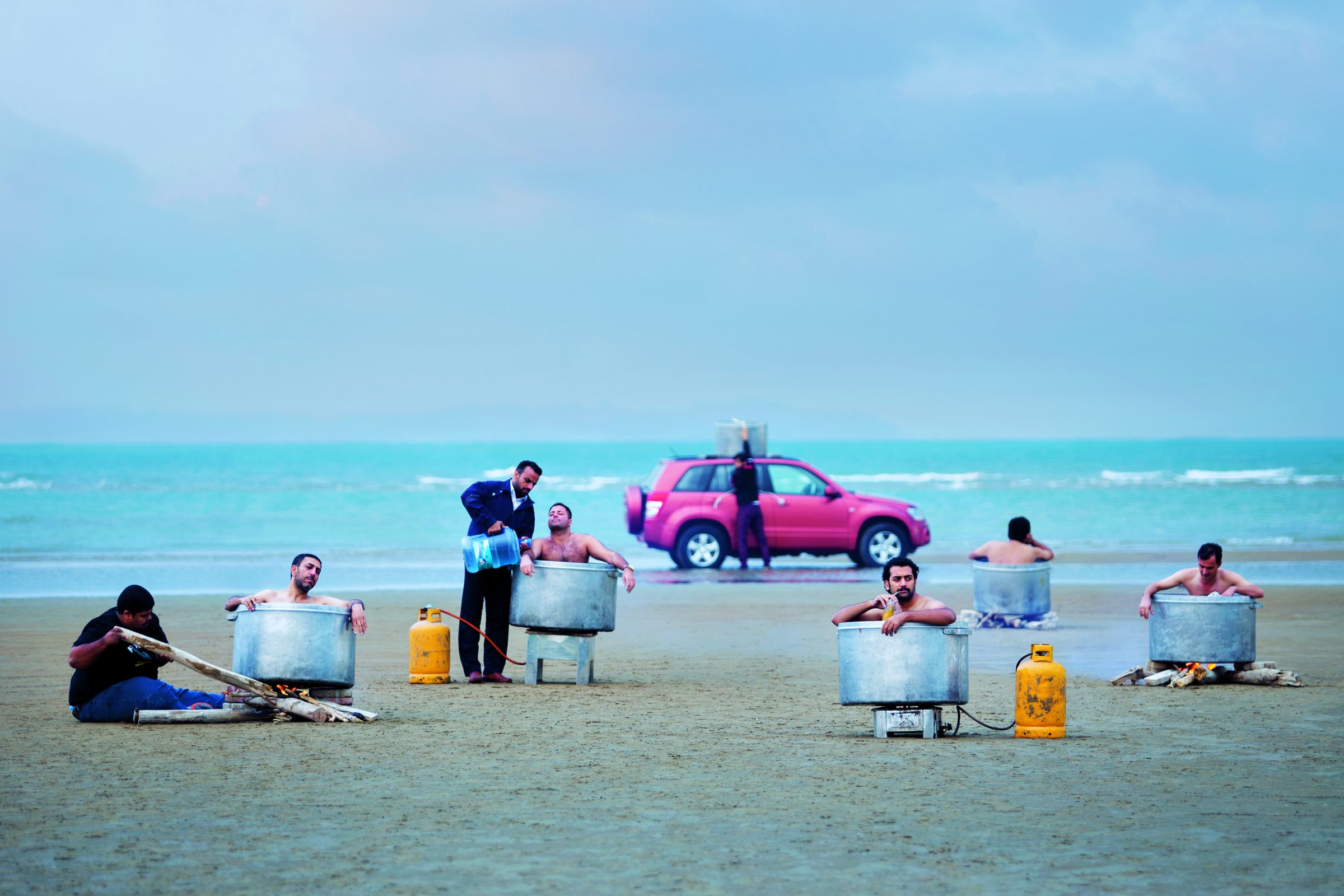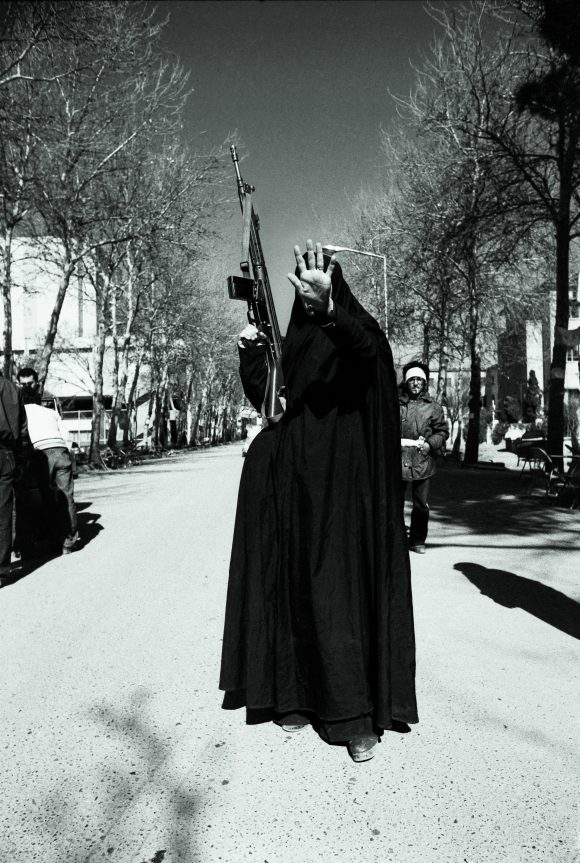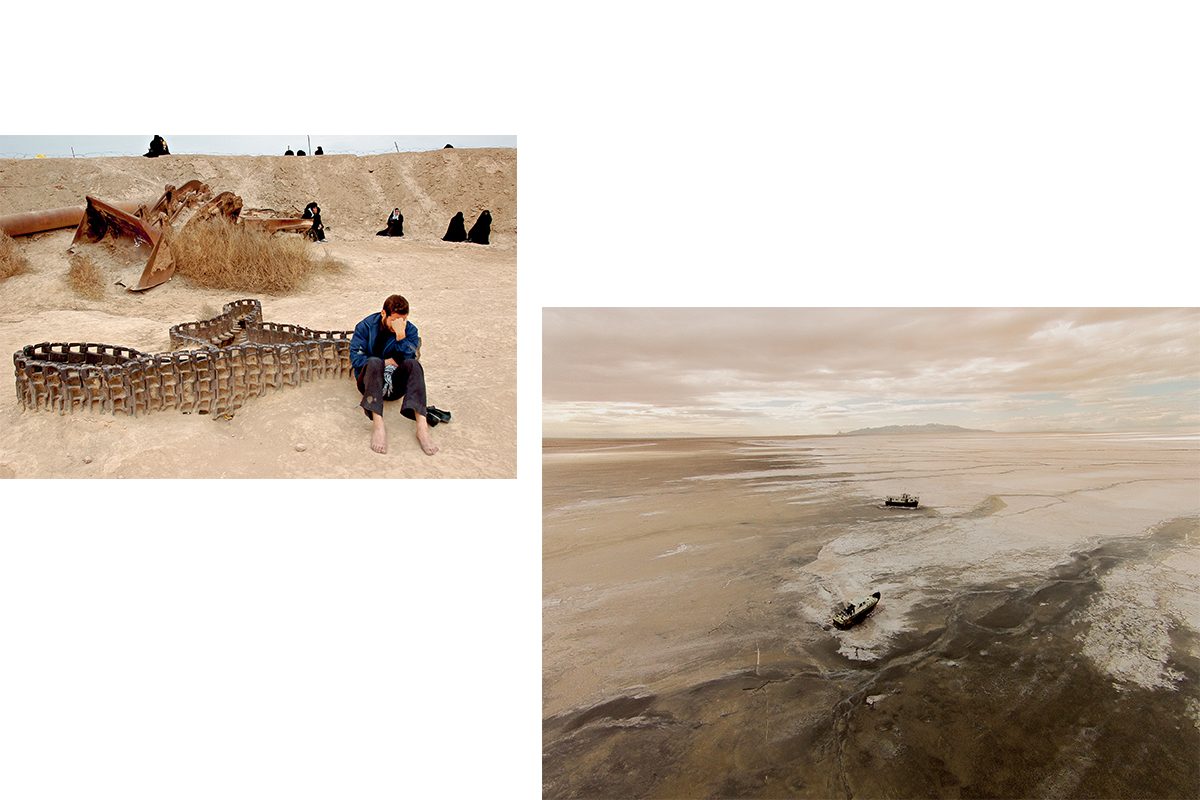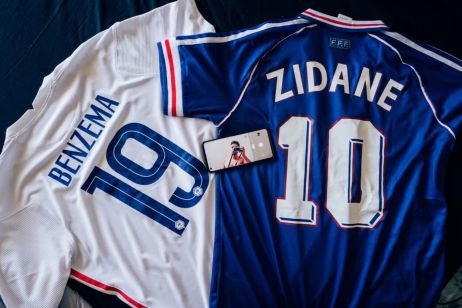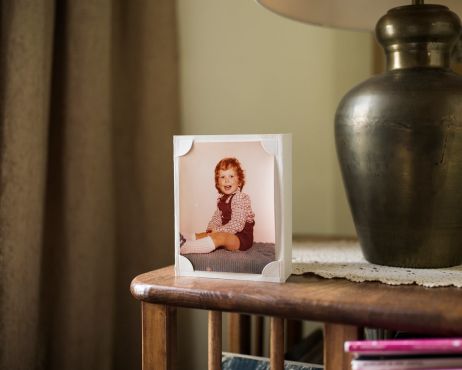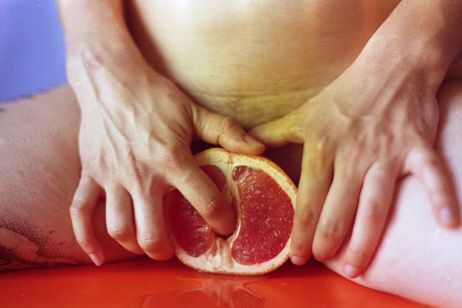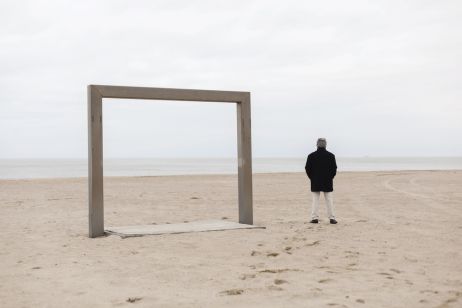The exhibition Iran, Year 38 narrates the country’s past four decades through the prism of photography. It’s an ambitious portrayal of the historic roots and tensions of a complex and creative society, compiling the work of sixty-six photographers. Text by Mathieu Oui.
This surely will be a high point of the summer in Arles. Exhibited in the Église Sainte-Anne and accompanied by a catalogue published by Textuel and Arte Éditions, Iran, Year 38 is an ambitious project. It’s supported by two of the most emblematic figures of Iranian photography, the gallerist Anahita Ghabaian (who founded Silk Road Gallery in Tehran, in 2001) and the photographer Newsha Tavakolian, a member of Magnum Photos. The two curators wanted to paint a nuanced picture of Iran, far from the shortcuts presented in the media, by aligning the country’s contemporary history with that of photography. Their panorama of photographic creations combines the work of 66 photographers, where the youngest are not yet 30 years old. This year marks the 38th anniversary of the revolution that overthrew the Pahlavi dynasty and gave birth to the Islamic Republic established by Ayatollah Khomeini—an opposition leader—on 1 April 1979.
Before then, photography barely existed. But with this event, the medium came into its own, propelled by the demands of news agencies and the foreign media. And the war against Iraq—which began in September 1980, less than 18 months after the revolution—presented a second major tipping point. Saddam Hussein’s army attacked the country, helped by countries in the West who feared the spread of an Islamic revolution and the possibility of Iranian leadership in the region. “Foreign photographers left Iran when the war came”, explains Anahita Ghabaian in an interview for the publication accompanying the exhibition. “There were a lot of different subjects for the Iranian photographers who, for eight years, were learning and perfecting their work”. The revolution and the war make up the first two chapters of the book’s eight parts. The following chapters explore the legacy of the Islamic revolution, focusing on propaganda and the omnipresence of religion, questions of identity and of mise en scène, environmental problems, and also cinema.
From the frontline to the living room
An entire first part of the exhibition is dedicated to black and white news reports. But in the section titled “War from the Frontline to the Living Room”, journalistic photos—also in black and white—are placed in conversation with staged colour portraiture; because, beyond the act of documenting eight years of war, the event has left a profound trace in the country’s collective memory. “The war entered the living space of each Iranian”, says Anahita. “Everyone has a direct or indirect memory of these events”, which have been so carefully upheld by the political system and the media, through commemoration and the iconography of martyrs. With her series “Today’s Life and War”, Gohar Dashti records the daily lives of young couples on the battlefield. The projection of Saba Alizadeh’s photos depicting soldiers in domestic interiors strongly evokes this seeping of history into private life (in the series “Light and Soil”). Babak Kazemi evokes the martyrdom of those living in Khorramshahr—a town on the border with Iraq that was scorched by the conflict—by overlaying photos of people and landscapes on plaques used to display house numbers. And with her strong sense of staging—a bloody knife next to a plate, red high heels alongside a soldier’s boots—Shadi Ghadirian provides an unusual counterpoint to these years of suffering. The artist is especially involved in the feminist movement and became known for her series “Like Every Day”, where women in chadors are shown with kitchen utensils (a teapot, iron, cheese grater…) where their face should be.
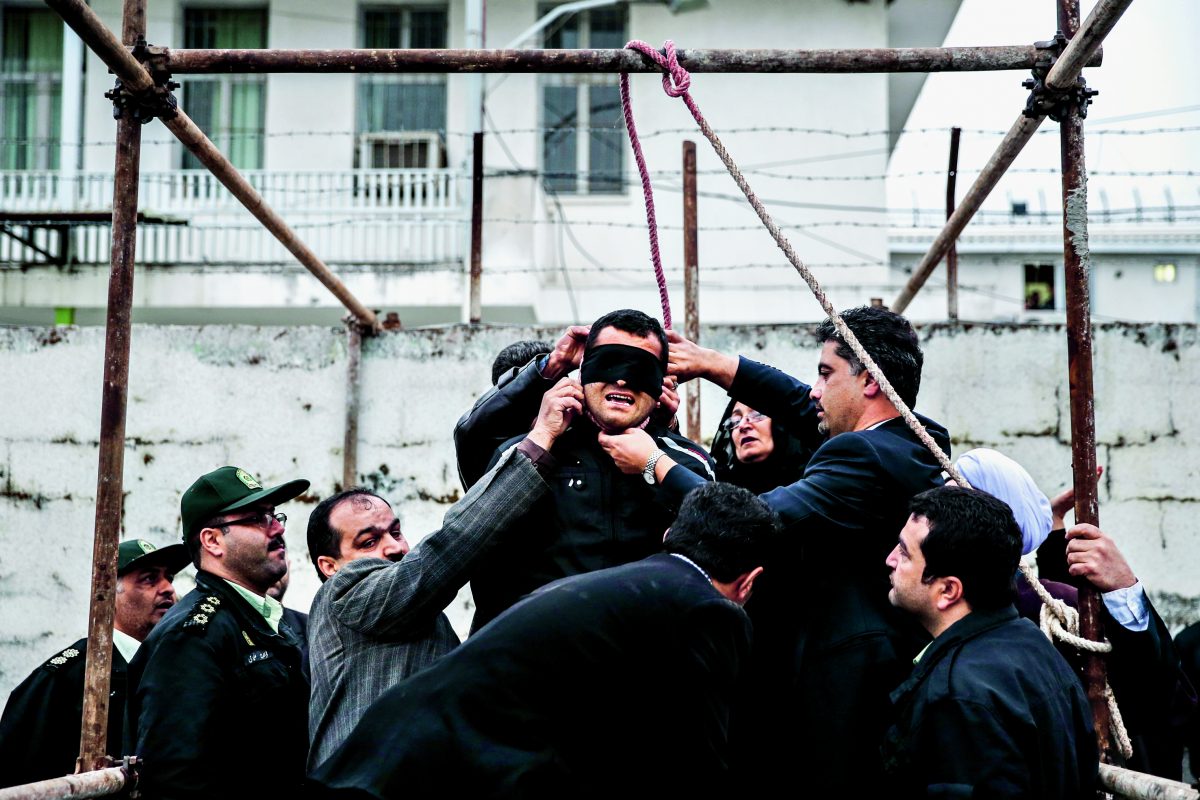
© Arash Khamooshi
© Kaveh Kazemi
À g. : © Abbas Kowsari ¦ À d. : ©Azin Haghighi
Image d’ouverture extraite de la série Espace public, 2015 © Morteza Niknahad & Behnam Zakeri
